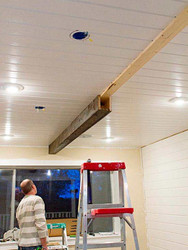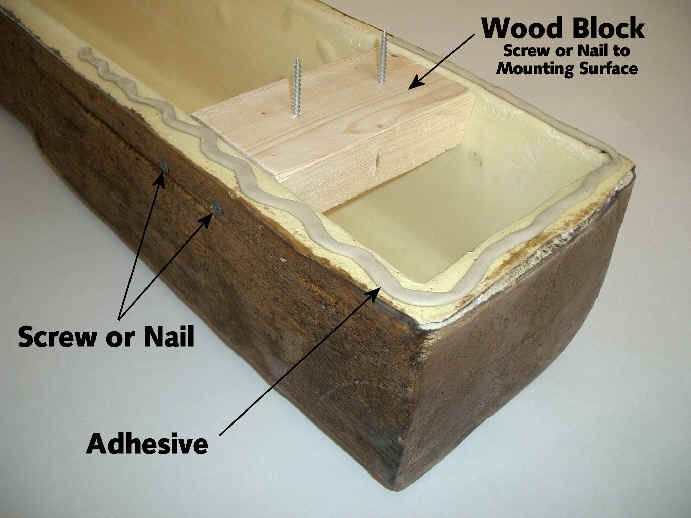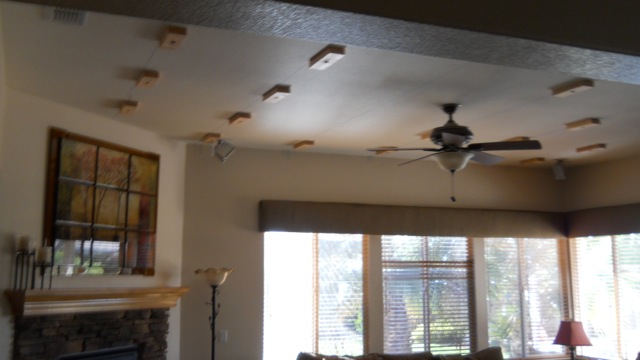
Installing Beams While Enhancing Design
Before you begin your faux beam installation, you'll need to decide this first: \"Will I use wood mounting blocks or a plank?"
Somebody once said: There's more than one way to skin a cat. And presumably nobody ever asked them to house sit their pets.
But the expression carries a lot of truth - in that there is always more than one way to do things.
In fact, at FauxWoodBeams.com, we're constantly finding customers coming up with new and creative approaches to using and/or installing our products. One thing we noticed very early on is that the 'right' way to mount a beam - using wooden blocks secured into the ceiling studs - isn't the only way.
 Traditionally, mounting blocks are installed on the ceiling, and our beams are then secured to them with screw/nails and adhesive.
Traditionally, mounting blocks are installed on the ceiling, and our beams are then secured to them with screw/nails and adhesive.
Because our beams are made from lightweight polyurethane, they weigh very little - and you can secure them to the ceiling with a couple of screws and construction adhesive. In fact, we recently blogged about how you could even attach them using nothing more than magnets.
So the ease in which they can hang from the ceiling gives enterprising designers a lot of leeway in how they approach their projects.
One installation technique we've seen a lot of involves ignoring the idea of mounting blocks altogether, and installing a length of wooden plank instead.
 Using a solid plank in lieu of mounting blocks is a great way to ensure your beam stays straight.
Using a solid plank in lieu of mounting blocks is a great way to ensure your beam stays straight.
At its core, the concept is the same. In fact, it's almost easier to secure a single length of wood than multiple mounting blocks.
Where the advantage lies, however, is in making sure your beam sits straight on the ceiling. With mounting blocks we recommend using blue masking tape to 'map out' where the beam is meant to sit. When you use a single plank as an installation guide, you don't need to do that.
The only complication rests in cutting the plank to the appropriate length. You also have to make sure the plank is the correct width - narrow enough for the hollow u-shaped beam to slot over it, but wide enough so it's easy to secure the beam to it with screws.
 There's no 'right' way to do things; so you'll have to decide yourself if you want to use mounting blocks, or a single plank.
There's no 'right' way to do things; so you'll have to decide yourself if you want to use mounting blocks, or a single plank.
Using a mounting plank isn't right for all circumstances - but it's certainly an alternative that's no less correct than the 'right' way to do things. And we're interested in showing you this technique, because it demonstrates how the possibilities for our beams are limited only by your imagination.
For more instructions and tips on installing our products, visit our Installation page.
Shop Related Products


